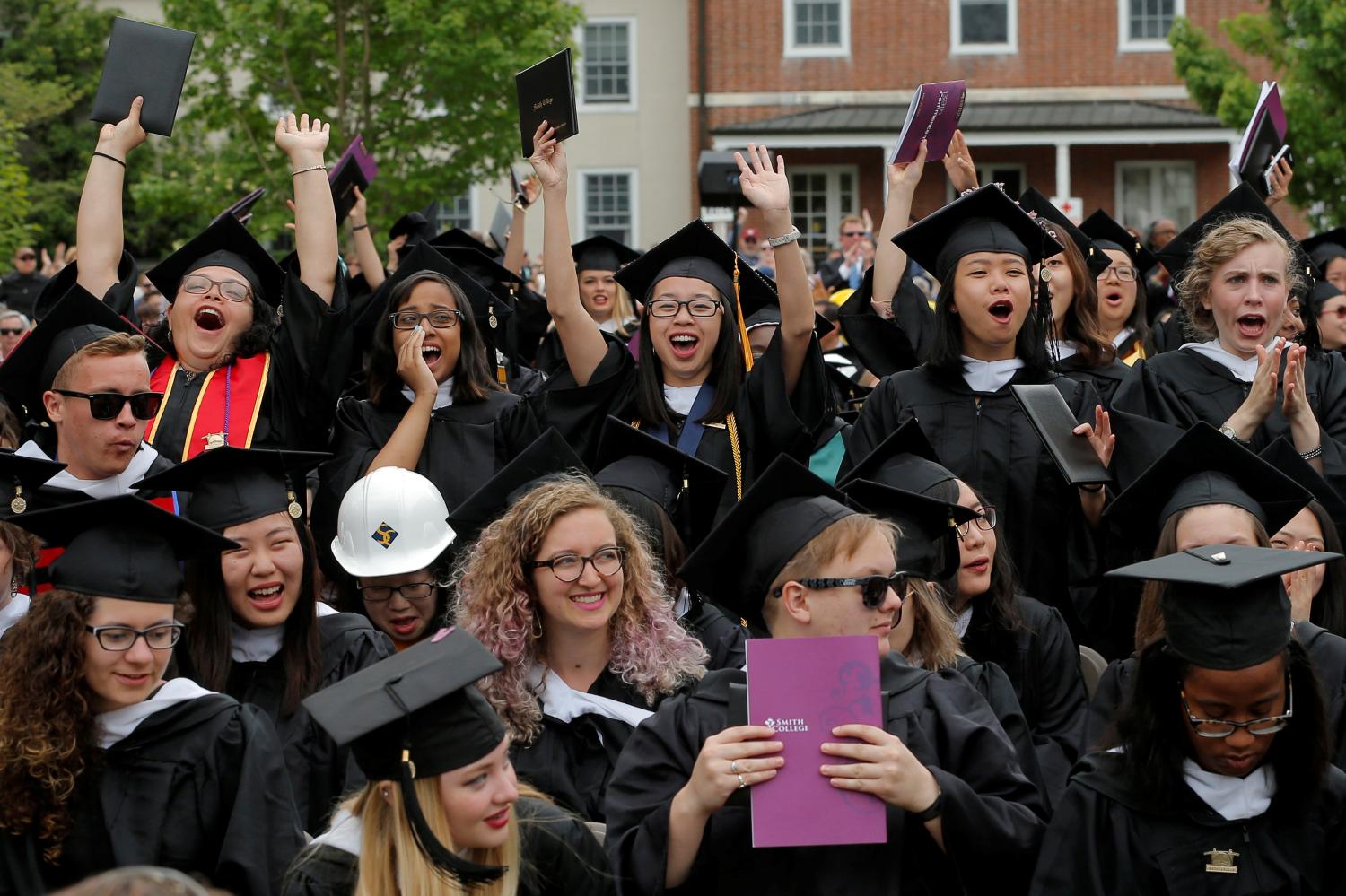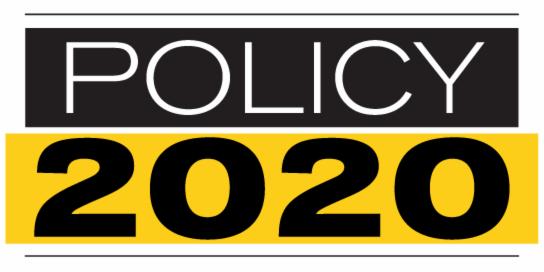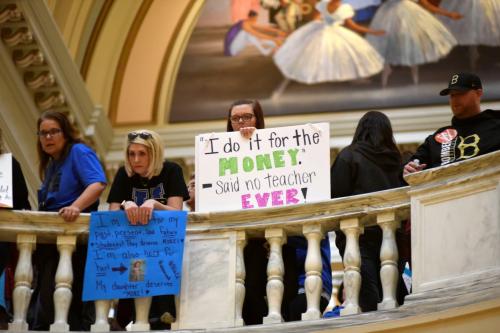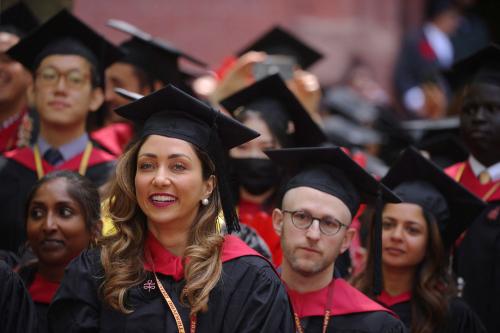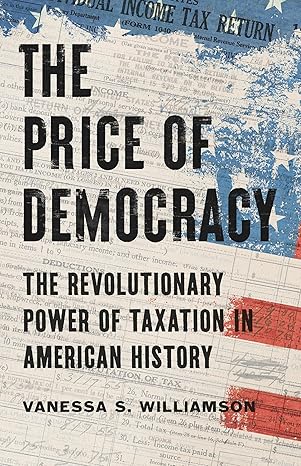Two education issues—college affordability and teacher salaries—have taken prominent roles in the primary season leading up to the 2020 presidential election. In this paper, we propose a federal policy solution that could address both of these issues: a generous loan forgiveness program for teachers and other educators.
Ideally, this loan forgiveness program would pay teachers’ student loan payments on their behalf each month while they are working in schools so teachers do not pay any money out of pocket. Forgiveness amounts would be generous—at least for debts incurred pursuing an undergraduate degree—and could vary based on teachers’ subject specialty and the need level at the school.
The proposal’s objective would be to make loan forgiveness generous enough so that a college student graduating with a typical loan balance could emerge free and clear of student loans within just a few years if helping to fill critical vacancies in high-need schools. Teachers in other subjects or working in schools with fewer needs would still benefit from the program, but because annual forgiveness amounts are lower they would need to work longer (say, 6-10 years) before emerging debt free.
This proposal’s benefits would exceed those of other extant teacher loan forgiveness programs; states and the federal government could either use these funds to help pay for the program or repurpose them to support public schools in other ways. Elements of the program could also be tailored to provide some benefit to other kinds of educators, including school psychologists, school leaders, and early childhood instructors.
Why this proposal is needed
Teaching is the largest public-service occupation in the U.S., employing some 3.6 million nationwide—about 5% of the college-educated workforce. Schools are the primary way we invest in the country’s future, and effective teachers have been linked to a number of important, short- and long-term outcomes for students. Teachers’ skills are so important they have even been arguably linked to country GDP. Yet, the U.S. has some of the lowest-paid teachers among developed countries when comparing to the pay of similarly qualified individuals in the same country employed in other industries. Perhaps not surprisingly, we have seen evidence of declining interest in the profession among young people—a worrying signal for the future.
Historically, teacher salaries have been left to states, though the time may be right for federal intervention to provide a much-needed boost to the ranks of teachers. To begin, states have been investing less in both K-12 and higher education and are now feeling pinched by other pressures, such as mounting pension liabilities and growing health care costs, that make devoting money to teacher salaries difficult. Indeed, teacher salaries have been largely stagnant since the Great Recession, at least until widespread teacher strikes that started in the spring of 2018 raised public awareness and prompted a number of states to start putting money toward teacher salaries again.
Also, consider where the needs for teacher talent are most acute—namely, in specific subjects (typically math, science, and special education) and in schools serving high-need student populations. These subject- and location-specific shortages are typically attributed to state and local policy decisions—like single-salary schedules and school funding inequities across locales—that often inhibit schools from offering more competitive salaries to attract the needed teacher talent. Disadvantaged student groups thus experience systematically low access to quality teachers, and federal intervention to help mitigate systemic inequalities clearly has precedent.
It is quite likely that increasing amounts of student loan debt plays a role in deterring young people from the teaching profession. Most readers will be familiar with the increasing cost of a college education and record-high debt levels—now totaling more than $1.6 trillion in the U.S.—that young students are bearing to acquire that education. As students take on more debt to finance their education, they also make major and occupational choices to ensure that they are getting a return on their investment—implying fewer people choosing to pursue public-service fields like education.
We believe generous loan forgiveness will improve the teacher workforce through two primary mechanisms. First, we will see greater productivity from teachers already in the classroom. For example, an estimated 14% of teachers work second jobs to supplement their teacher salaries. And though salaries are not typically the leading reason teachers leave the classroom, higher pay is consistently a factor in longer retention. An analysis of the Florida Critical Teacher Shortage Program, a statewide program designed to increase the supply of teachers in “hard-to-staff” areas, found that the loan forgiveness provided by the program significantly decreased the attrition of teachers in shortage areas. Generous loan forgiveness would help reduce the financial hardship of teaching, allowing teachers to focus on their primary jobs and stay in the classroom longer.
Second, generous loan forgiveness will help attract a more diverse teacher supply for the future. A common rule of thumb is to avoid borrowing more than what you expect your starting salary to be. Given that the average starting annual salary for teachers is less than $42,000 while the debt load for education majors is $30,665 (according to tabulations of 2016 College Scorecard data), one might presume this means we should have a robust teacher supply. But keep in mind that this is an average debt load. We would do well to ask which students are potentially being deterred from teaching because they may face higher-than-average debts. We can think of two likely groups. The first group is composed of those who go to relatively selective colleges, where higher tuition (and debt tabs if their parents are not affluent) typically also correspond to higher scholastic ability (which correlates with greater classroom effectiveness). The second group is composed of students of color, who due to limited financial resources in their families of origin often take out student loans at higher rates and graduate with higher debt balances. These two groups are exactly the kinds of college graduates that we should be recruiting to the teaching profession.
An important consideration is determining how much of a benefit to give to which teachers and for what educational expenses. We propose a program that would be available to all teachers, though benefits are greater to teachers in high-need subjects and schools. Importantly, because there is little evidence that getting a master’s degree increases a teacher’s effectiveness, we should limit how the benefit can be applied to debts incurred for graduate work. Plus, teachers are already rewarded for it in their districts through increased salaries—arguably even overcompensated for it. Perhaps the only master’s degree for which loan forgiveness could be offered are those that serve as entry points into teaching for individuals who didn’t initially receive a bachelor’s degree in education, and cap the benefit.
Another serious issue this program could help address is the lack of highly qualified individuals in the early childhood education workforce. Though many states are beginning to recognize the compelling value of investing in high-quality preschool programs, teachers in these programs are significantly underpaid and (consequently) underqualified. One of the most important features of a widely cited successful experimental program, Perry Preschool, was due to high-quality teachers who had at least a bachelor’s education. If we are serious about making investments in early childhood education and reaping the long-term education, health, and social benefits of these programs, we also need to make much stronger investments to attract and retain qualified individuals in this field.
Why this proposal is politically feasible
Increasing teacher pay is strongly supported among the general public in the U.S. The 2019 Education Next Poll showed nearly three quarters of all adults in the national survey supported raising teacher pay. Also, the survey showed broad support for greater investments in public schools specifically from the federal government (which currently pitches in about 10% of all school spending). If teacher loan forgiveness everywhere is expanded, all teachers benefit—in both red and blue states.
We acknowledge that this loan forgiveness proposal is not as comprehensive as free college plans or complete loan forgiveness for students.1 However, we argue this proposal is much less costly and clearly tailored to the public’s interest. Free college or blanket loan forgiveness policies will benefit individuals from advantaged backgrounds since they are the ones who disproportionately have access to higher education. Conversely, a targeted benefit to teachers will be more streamlined to those who need the financial support (due to modest salary support) and help to elevate perceptions about the desirability of this critically important public service profession.
The federal government and a majority of states already offer a variety of grant and loan forgiveness programs for teachers, though the benefits are modest, conditioned, and difficult to utilize. For example, the current federal Teacher Loan Forgiveness Program offers a benefit to teachers in low-income schools (up to $17,500 for teachers in high-need subjects; $5,000 for other subjects). Yet, this benefit is considerably less than typical teachers’ loan balances upon graduation. The TEACH Grant program for years incorrectly converted thousands of teachers’ grants of up to $24,000 into loans requiring repayment; this problem has only begun to be reversed after investigative reporting prompted a response from the Senate. Public Service Loan Forgiveness (PSLF), a federal loan forgiveness program for students who enter public service careers, rejected 99% of its initial applicants—often for minor technical reasons like missing paperwork or using the wrong loan servicer. After the low approval rate prompted Congress to expand repayments through a temporary program, another 99% of applicants were rejected once again. All loan forgiveness programs we are aware of require teachers to make regular payments while teaching to qualify for any benefit.
Our proposal would enhance these more modest, less reliable benefits and make them available to those already in the workforce and those who may become teachers in the future. And, rather than completely creating new programs, we can use and simplify the existing federal resources. State resources currently dedicated to teacher loan forgiveness can either help augment an expanded federal program or be repurposed to support public schools in other ways. Expanding teacher scholarship programs could also be a worthwhile policy lever, offering many of the benefits we describe here, though it is unclear whether more scholarships would be necessary if loan forgiveness is sufficiently increased for all teachers.
A generous loan forgiveness program for teachers and other educators will help jumpstart anemic workforces across the country, providing greater access to quality instruction for all students and positioning the U.S. to take the lead in the 21st century economy.
-
Footnotes
- Several Democratic candidates for the 2020 presidential election have put out position statements supporting some form of either free college or loan forgiveness. Elizabeth Warren (loan forgiveness) and Bernie Sanders (free college) have advanced large programs with relatively few conditions, and thus are very costly. Both Beto O’Rourke and Joe Biden support more modest support programs through an expanded PSLF and would allow teachers to suspend payments while in the classroom (O’Rourke’s plan offers more benefits specifically to teachers, offering complete loan forgiveness within five years).
The Brookings Institution is committed to quality, independence, and impact.
We are supported by a diverse array of funders. In line with our values and policies, each Brookings publication represents the sole views of its author(s).


